Why you can trust Tom's Hardware
Our standard benchmarks and power tests are performed using the CPU’s stock frequencies (including any default boost/turbo), with all power-saving features enabled. We set optimized defaults in the BIOS and the memory by enabling the XMP profile. For this baseline testing, the Windows power scheme is set to balanced (default), so the PC idles appropriately.
To get the most out of the Intel Alder Lake chips, you need to be on Windows 11 with its updated scheduler to get the most out of the Intel Alder chips. In most cases, Windows 10 performs well. However, some tests (Cinebench R20, Corona and POVRay) take a significant hit. In short, if you’re going with Alder Lake, you must upgrade to Windows 11 for the best results across the board. That may change with patching and updates in the future, though.
Synthetic Benchmarks
Synthetics provide a great way to determine how a board runs, as identical settings should produce similar performance results. Turbo boost wattage and advanced memory timings are places where motherboard makers can still optimize for either stability or performance, though, and those settings can impact some testing.




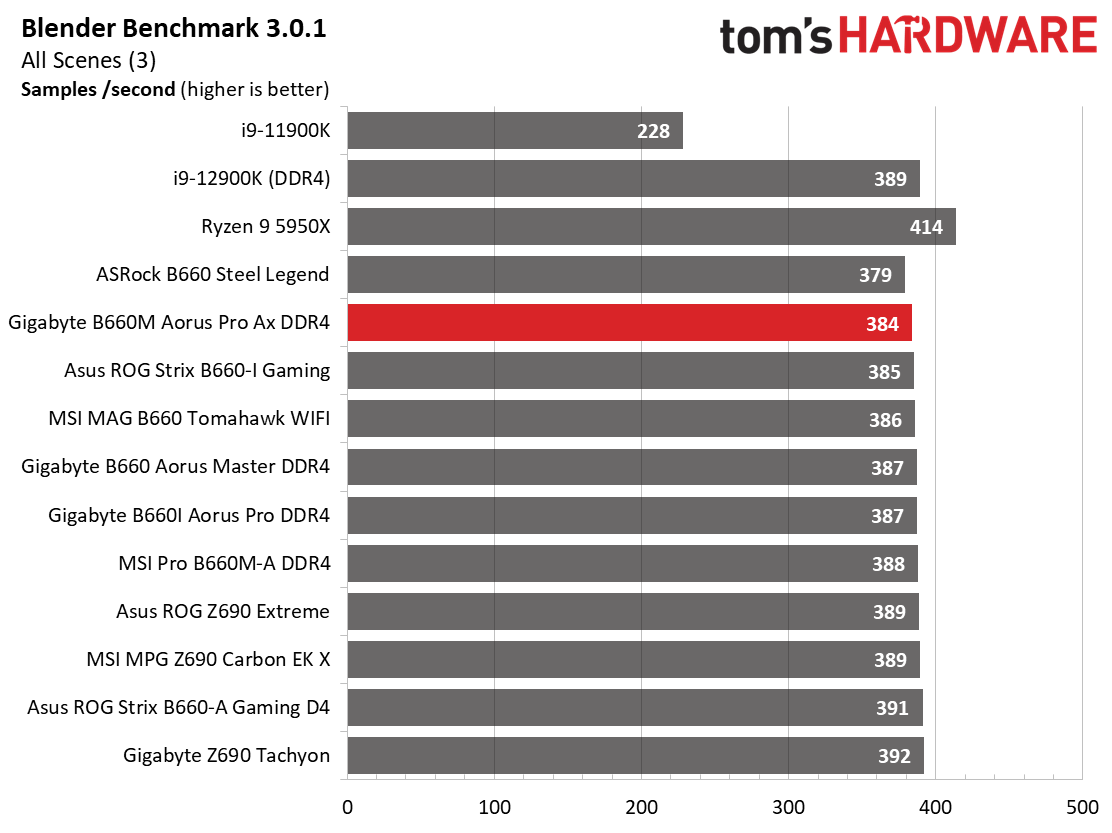










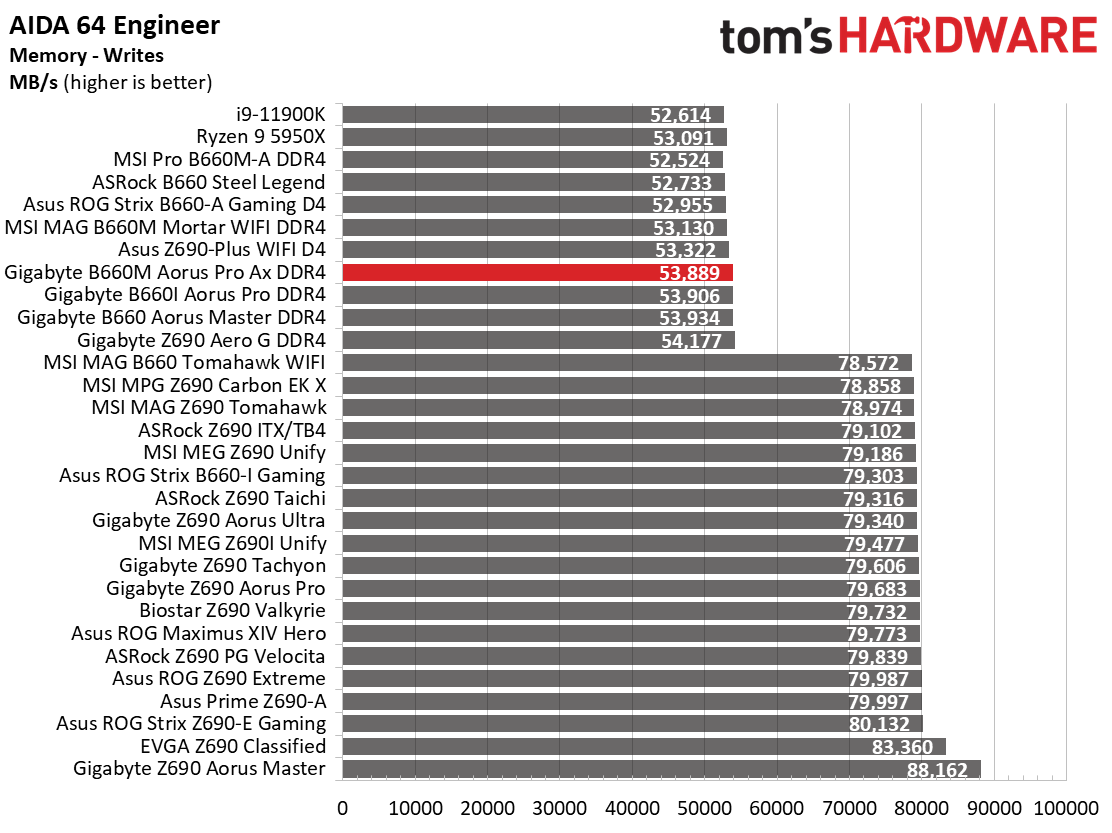


The B660M Aorus Pro AX DDR4 was a competent performer in the single and lightly threaded synthetics, but itstruggled in 7-Zip (producing the lowest scores from Alder Lake so far) and was below the average in Cinebench R23, Blender, POV-Ray multi-core along with the Photo/Video editing tests from Procyon. On the positive side, Procyon Office results were some of the fastest we’ve seen.
The board struggled due to thermal throttling from default settings. To prevent throttling, you can use a negative voltage offset if needed. That said, I wish more boards could handle these ‘real life’ loads better out of the box, as a majority of Alder Lake motherboards behave in this way.
Timed Applications



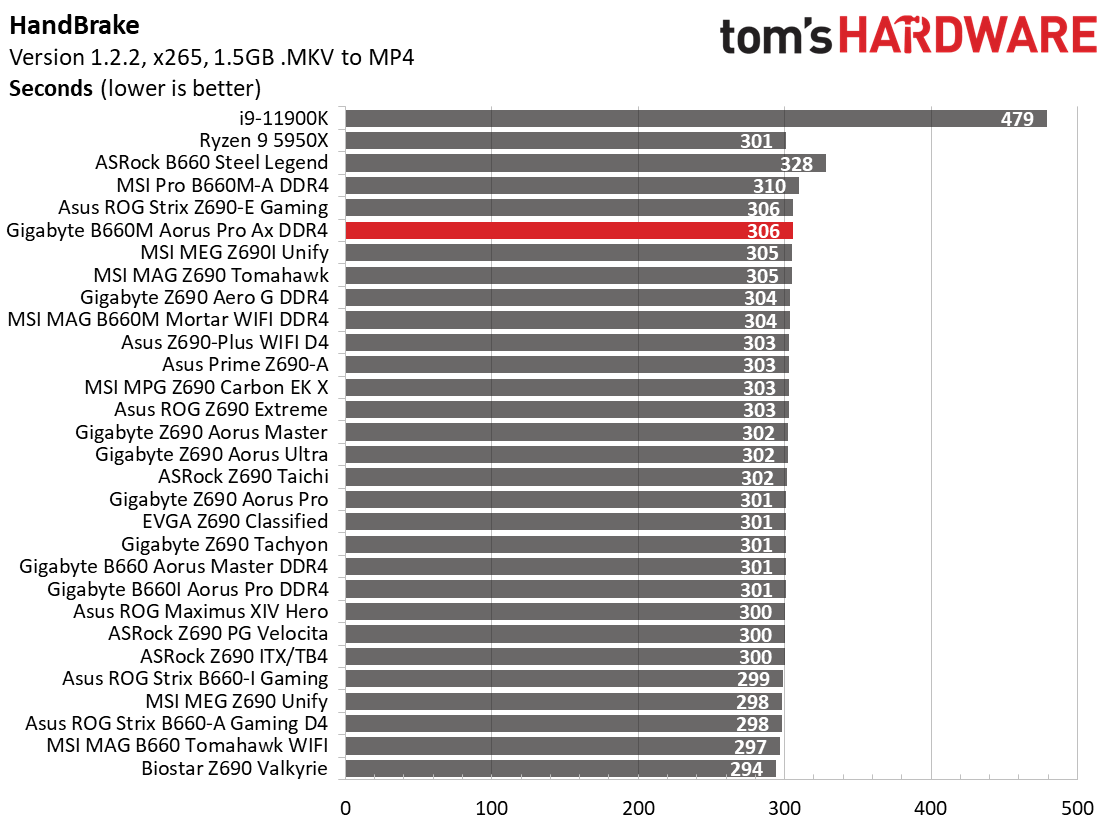
In our timed applications, the LAME result was solid, running faster than most. However, Corona Ray Tracing was the slowest Alder Lake result. In fairness, its result was only about 2 seconds (a couple of percent) slower than average. The Handbrake results were also slower than average in both tests. Here again, the thermal throttling under high-intensity loads is rearing its head.
3D Games and 3DMark

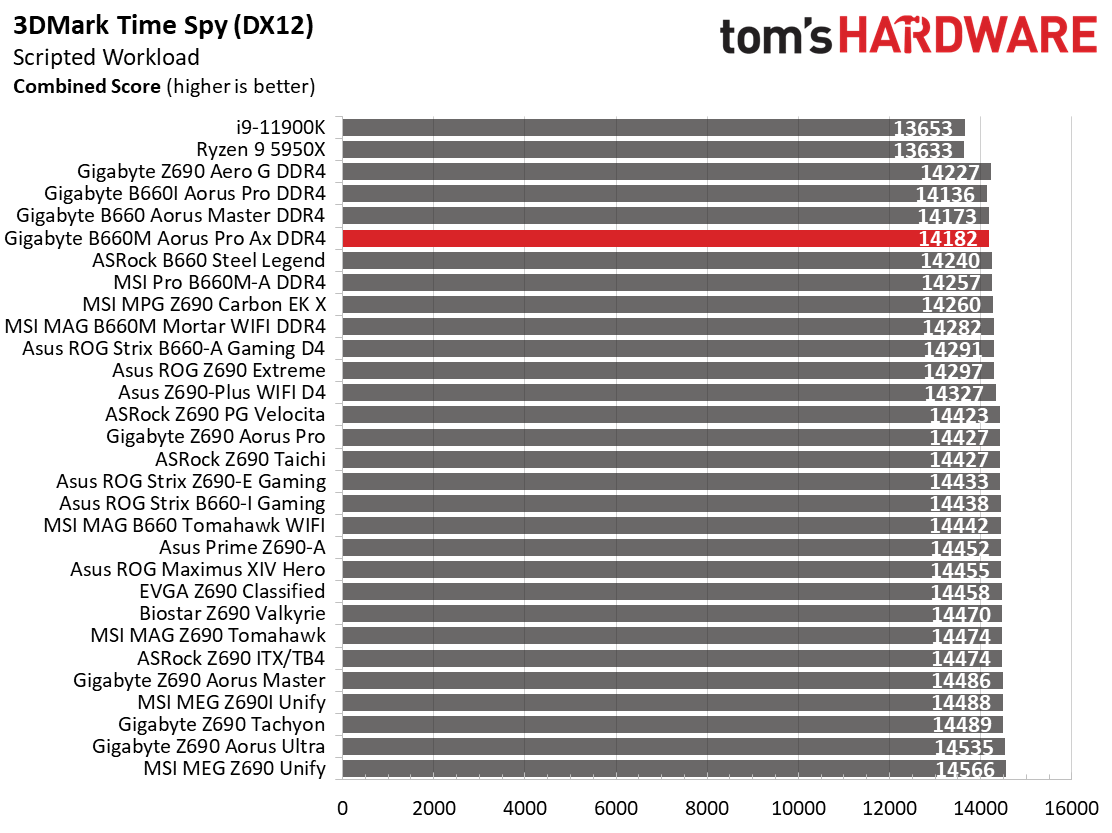


Starting with the launch of the Z690 chipset, we’ve updated our game tests, updating to Far Cry 6 and shifting from F1 2020 to F1 2021. We run the games at 1920x1080 resolution using the Ultra preset (details listed above). As the resolution goes up, the CPU tends to have less impact. The goal with these settings is to determine if there are differences in performance at the most commonly used resolution with settings most people use or at least strive for. We expect the difference between boards in these tests to be minor, with most falling within the margin of error differences. We’ve also added a minimum FPS value, as that can affect your gameplay and immersion experience.
Get Tom's Hardware's best news and in-depth reviews, straight to your inbox.
In F1 2021, the B660M-A DDR4 averaged 164 frames per second (fps) with minimums of 139 fps, an average result. In Far Cry 6, the board averaged 136 fps, with a minimum of 122 fps, both right around the average. In our synthetic GPU tests, the Gigabyte scored 14,182 on 3DMark Time Spy and 16,682 on Fire Strike Extreme. The synthetics were a bit slower than average, but nothing you’d notice in a game.
Power Consumption / VRM Temperatures
We used AIDA64’s System Stability Test with Stress CPU, FPU and Cache enabled for power testing, using the peak power consumption value. The wattage reading is from the wall via a Kill-A-Watt meter to capture the entire PC minus the monitor. The only variable that changes is the motherboard; all other parts are the same.
At idle, the DDR4-based Pro consumed 44W, with load wattage peaking at 333 Watts. The idle result is one of the better we’ve tested, while the load power use was on the high side. Overall, there’s nothing to be concerned about here.

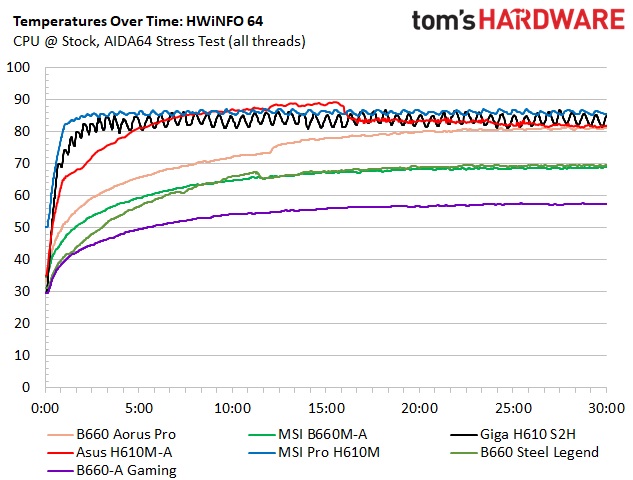
During stock stress testing, we saw thermal throttling from the CPU almost immediately. Still, the VRMs peaked at around 80 degrees Celsius on our sensors and around 87 degrees, according to the internal temperature sensor. Although one of the VRM banks ran hot, it was still within the operating parameters of the MOSFETs.
Overclocking
Overclocking the CPU isn’t possible on B660-based chipsets, but the platform allows memory speed adjustment. With our DDR4-3600 and DDR4-4000 kits, we simply set XMP, and off we went without a hitch. Surely there’s some headroom left, but I’m not convinced spending a premium for higher-end DDR4 memory is worth it at this time. Stick with the sweet spot around DDR4 3600 with the low CL rating.
Bottom Line
The Gigabyte B660M Aorus Pro AX DDR4 is a solid board overall. While the appearance may not jump out at you compared to more expensive Z690 boards, you’re not going to want to hide this board within your chassis either. Hardware-wise, it has plenty of USB ports to go around, including a rear 20 Gbps Type-C port. But those who need a lot of storage may find the six total (four SATA and two M.2) drive options limiting. Outside of that, it’s pretty much standard fare.
Performance out of the box was disappointing during our heavily multi-threaded tests but otherwise fine in everything else, even for gaming. If your planned uses include a heavy dose of multi-threading, you’ll want to make some tweaks to get the most out of this board to prevent throttling. Gaming performance was solid, mixing in with the other results, so there are no worries. It comes down to how you use your system and if you’re willing to make some adjustments if your workflow calls for it.
Competition is fierce in this budget price range, as the major board partners each have an option. MSI has the MAG B660M Mortar WIFI DDR4 ($159.99), Asus the Prime B660M-A WIFI D4 ($152.99), and ASRock’s B660M Steel Legend is the most affordable at $114.99. Hardware-wise, these boards are all similar, but the ASRock doesn’t have integrated Wi-Fi. If you need more storage, the MSI and ASRock include six SATA ports (compared to four in the Gigabyte and others) and the two M.2 sockets. The MSI also has a better audio codec. These are all capable boards, so it’s going to come down to looks and price point for most users.
To that end, my weapon of choice out of these four would be the MSI. At $10 cheaper than the Gigabyte, you get better audio and more SATA ports. The Gigabyte is certainly nipping at the MSI board’s heels. For $10 more, you get what I feel is a better aesthetic and integrated RGBs if that’s your thing. Sadly, we haven’t tested the B660M Mortar, so we don’t know how it performs (thopugh I’d imagine similarly). Overall, the B660M Aorus Pro AX DDR4 is certainly a viable option in the B660M space, but doesn’t stand out for its features, performance or price.
MORE: Best Motherboards
MORE: How To Choose A Motherboard
MORE: All Motherboard Content

Joe Shields is a staff writer at Tom’s Hardware. He reviews motherboards and PC components.

